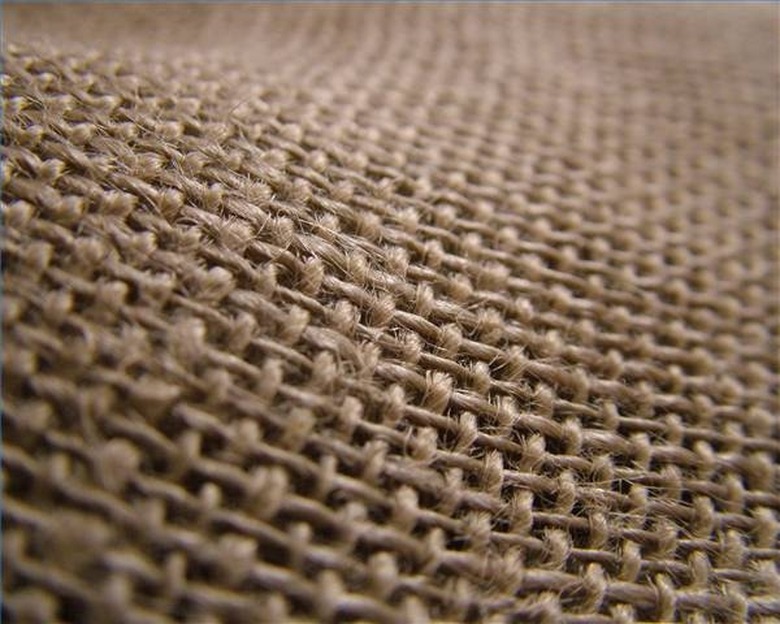Chemicals In Burlap
Burlap is made from the fibrous jute plant, which is found in India, Pakistan and Bangladesh. Burlap is environmentally friendly because it is 100 percent biodegradable in its natural state. It is used to make sacks, table cloths, curtains and as a backing for carpet or linoleum, among other things. Normally, burlap is organic and chemical-free; however, there are several instances where chemicals are applied.
Copper Sulfate
Burlap wraps for trees and root balls are frequently used in nurseries. These burlap wraps are usually treated with copper sulfate to slow the growth of the plant roots they protect. Burlap material that is used in nurseries should not be reused for other purposes.
- Burlap is made from the fibrous jute plant, which is found in India, Pakistan and Bangladesh.
Fungicides/Pesticides
Some manufacturers treat their burlap bags with chemicals such as Compsol, an EPA-registered fungicide, to impede the growth of fungus and extend the life of the burlap. Eradicoat (latex-based polymer with permethrin) is a popular pesticide sprayed onto burlap tree bands to control gypsy moths (see Resources).
Dye
Several organic and inorganic dyes are used to give burlap color for home decorating. Rit Dye is an example of dye used on burlap, and it contains no hazardous substances. Dharma Trading Company offers natural dyes made from plants and insects (see Resources). Because most dyed burlap products will not specify what dye brand is applied, dyed burlap should not be used to hold food products.
Flame Retardants
Flame retardants like Flame Stop™ (pyrolytic formula) are occasionally applied to burlap, especially in commercial environments. Because burlap is made from jute, it is extremely flammable. Some flame retardants, including Flame Stop™, are non-toxic and inhibit mold and mildew growth.
- Some manufacturers treat their burlap bags with chemicals such as Compsol, an EPA-registered fungicide, to impede the growth of fungus and extend the life of the burlap.
- Rit Dye is an example of dye used on burlap, and it contains no hazardous substances.
Detergents
Burlap that has been washed in detergent can retain traces of surfactants, water softeners or oxidants. Repeated water rinses can reduce the amount of residue left by detergent. To avoid detergent residue, purchase an eco-friendly, biodegradable detergent such as Get Clean Fresh Laundry Concentrate by Shaklee.
